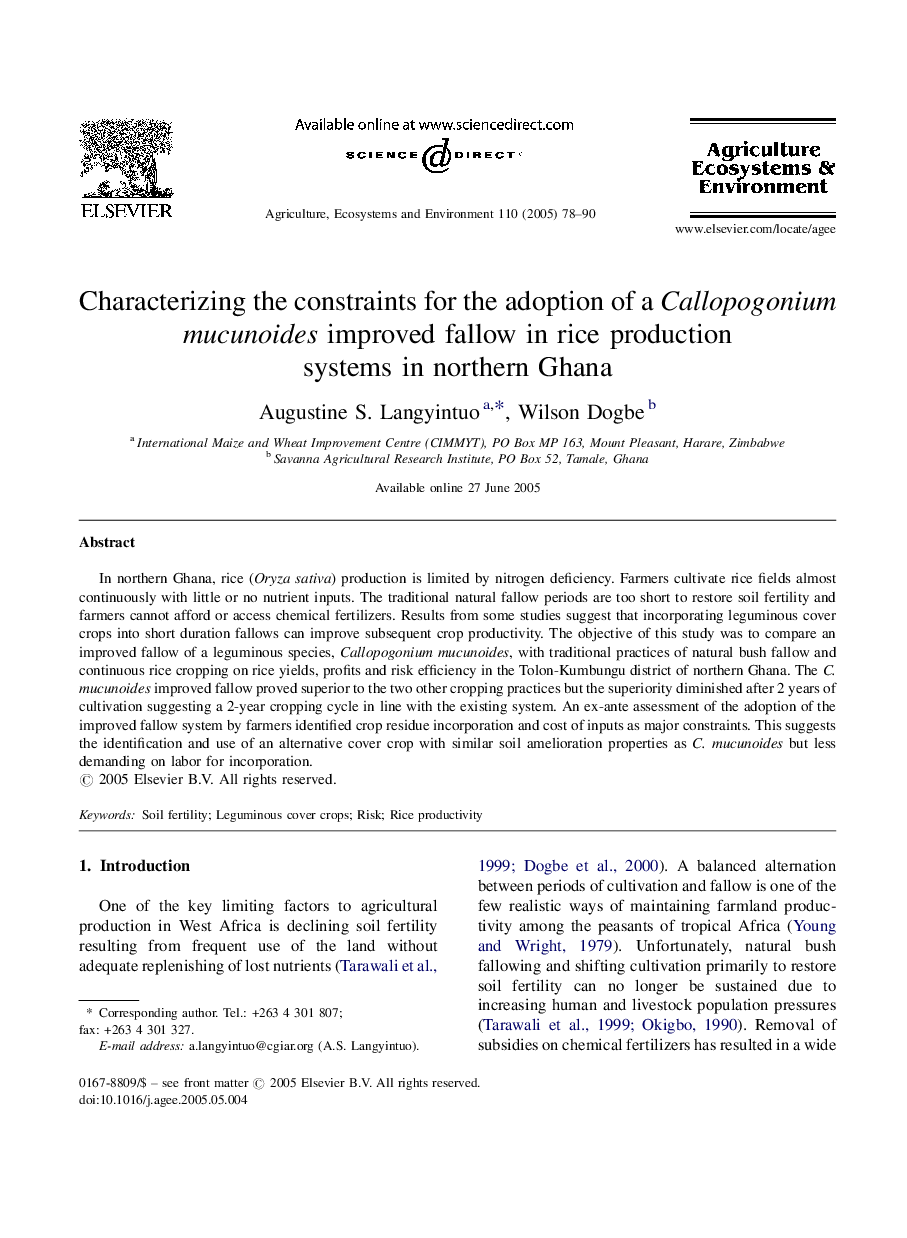| Article ID | Journal | Published Year | Pages | File Type |
|---|---|---|---|---|
| 8970772 | Agriculture, Ecosystems & Environment | 2005 | 13 Pages |
Abstract
In northern Ghana, rice (Oryza sativa) production is limited by nitrogen deficiency. Farmers cultivate rice fields almost continuously with little or no nutrient inputs. The traditional natural fallow periods are too short to restore soil fertility and farmers cannot afford or access chemical fertilizers. Results from some studies suggest that incorporating leguminous cover crops into short duration fallows can improve subsequent crop productivity. The objective of this study was to compare an improved fallow of a leguminous species, Callopogonium mucunoides, with traditional practices of natural bush fallow and continuous rice cropping on rice yields, profits and risk efficiency in the Tolon-Kumbungu district of northern Ghana. The C. mucunoides improved fallow proved superior to the two other cropping practices but the superiority diminished after 2 years of cultivation suggesting a 2-year cropping cycle in line with the existing system. An ex-ante assessment of the adoption of the improved fallow system by farmers identified crop residue incorporation and cost of inputs as major constraints. This suggests the identification and use of an alternative cover crop with similar soil amelioration properties as C. mucunoides but less demanding on labor for incorporation.
Keywords
Related Topics
Life Sciences
Agricultural and Biological Sciences
Agronomy and Crop Science
Authors
Augustine S. Langyintuo, Wilson Dogbe,
